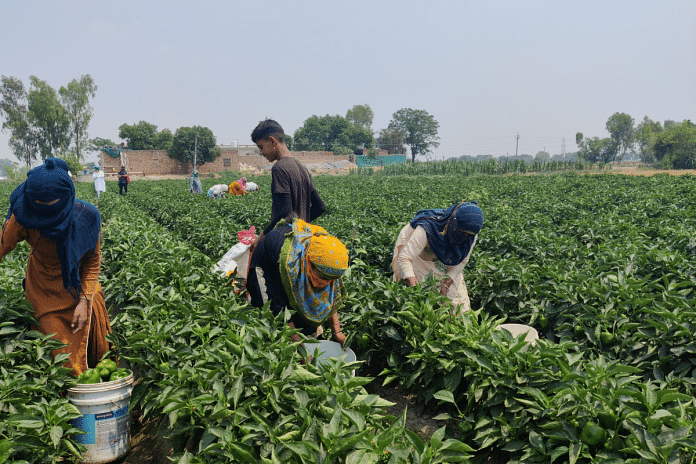Mansa: In Bhaini Bagha village of Punjab’s Mansa district, young men working under a private trader from Ambala are sealing truck-loads of cartons containing shiny, green capsicum, each carton weighing between 21 and 23 kg. The produce is from Gora Singh’s field in the village and is being transported to the mandis in West Bengal.
In a good year, Gora Singh sells his rich produce for anywhere between Rs 25 and 35 per kg. This year, though, he is forced to sell it for the throwaway price of Rs 2 per kg.
“This year has been the worst ever,” Gora Singh, who sets aside five-acre of his 20-acre farm for growing capsicum each year, told ThePrint. “It is almost like giving it away for free. This will not even recover my input cost,” he said.
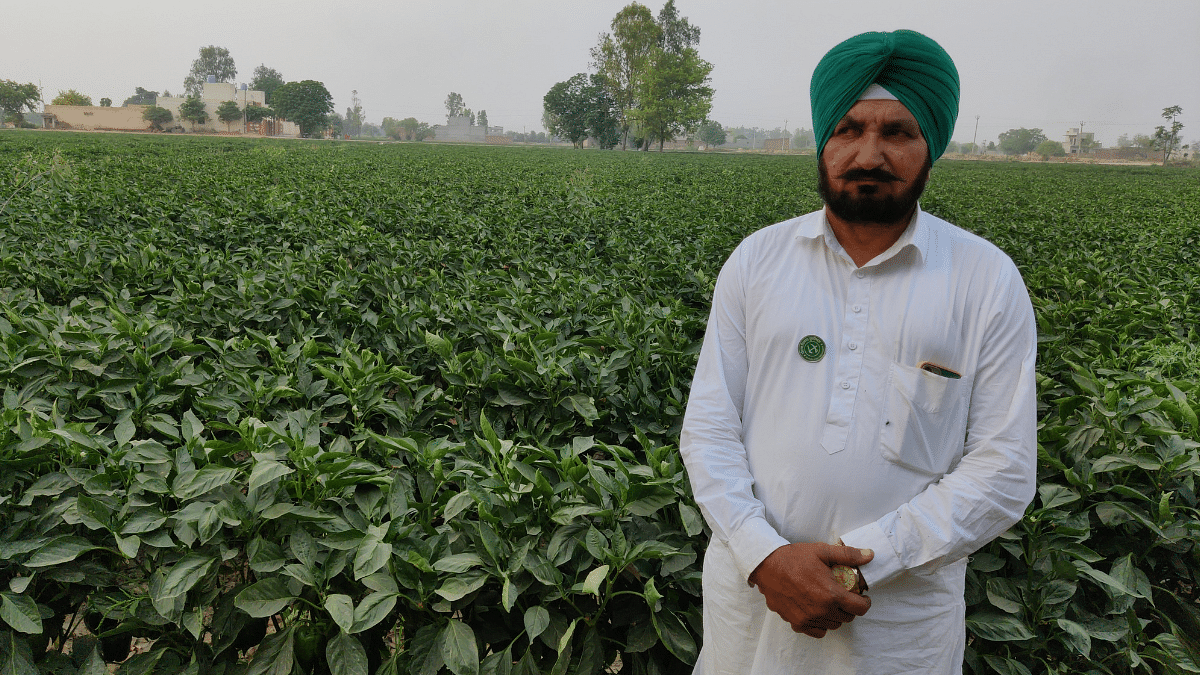
Like him, close to 2,000 farmers from 15 villages around Mansa, Bathinda and Firozpur are facing the same fate, said Gora Singh, also a farm union leader, to ThePrint.
Dejected, a handful of them collected at the Bathinda-Mansa National Highway on 20 April with plastic bags full of ripe capsicums from their fields and spilled it on the road. The videos from that protest on YouTube show trucks and cars squishing the vegetable, turning it into a pulp, while the farmers watched.
According to Gora Singh, the farmers protested so that people in the cities would know the actual rate of the vegetable.
When ThePrint reached the private vendors and horticulture department to understand the situation, the officials explained that the vegetable mandis are flooded with capsicum from all states, leading to a massive drop in prices.
Unpredictable weather conditions, too, have led to the produce reaching the markets from all capsicum-growing states almost at the same time, they added.
“Capsicum is plucked at different time periods in different states. For instance, West Bengal harvests it by February. By the time the produce finishes in the markets, capsicums from Punjab start coming in by March,” Parmesher Kumar, horticulture department official, Mansa, told ThePrint.
But this year, West Bengal saw close to no rainfall, Kumar said. “So, the capsicum-plucking season is continuing and is coinciding with Punjab’s. That is why there is excessive produce in the mandis,” he explained.
Meanwhile, the private vendors in Mansa, who are collecting the produce from the farms and transporting it to the mandis in Delhi and West Bengal, said that in addition to West Bengal and Punjab, capsicum from Uttar Pradesh was also flowing in. Moreover, Haryana, which sends the produce late, has started harvesting early this year, making matters worse.
“None of the farmers in any of the states are getting the rate they usually get every year. The farmers have two choices. They can either let the crop rot in the fields or can sell it at low rates. If they sell the produce, they will at least make some money,” said Surinder Pal, contractor for Ambala-based vegetable vending company, CND.
Good crop turned bad
“When people are snuggled in their blankets in peak winters, we farmers and our families are ankle deep in freezing water in our fields, growing capsicum. This crop requires hard work. If we don’t get the returns, what option do we have left?” Harwinder Singh, a capsicum farmer in Mansa, told ThePrint.
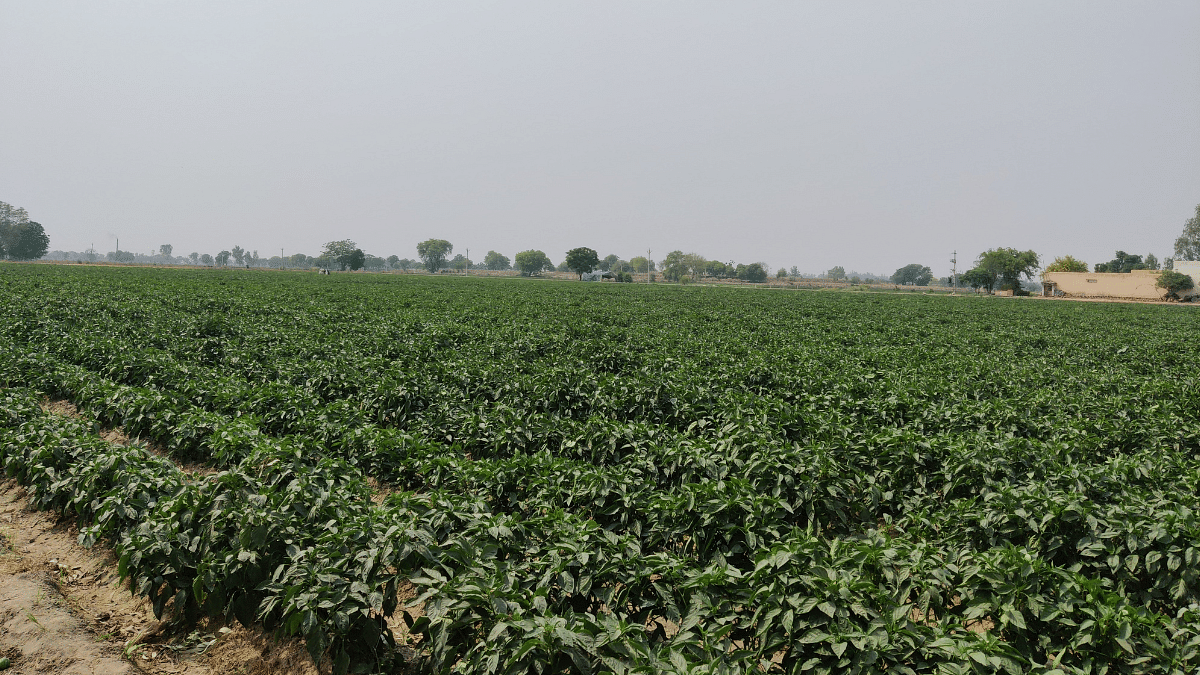
While capsicum is grown in winters, it is plucked in many rounds between mid-March and mid-June in Punjab. The cost of growing capsicum on an acre of land is about a lakh. If the returns are good, a farmer can earn up to Rs 6 lakh per acre, the farmers ThePrint spoke to said.
But this year, the market vagaries have pushed the farmers to a new low.
“This crop is so dear to us we do not let anything go to waste. And now we have reached a stage where we are forced to destroy it on our own,” Gora Singh, who is also the state vice-president of Punjab Kisan Union, said referring to their protest on 20 April.
The farmers also wrote to the district magistrate and the horticulture department of Mansa, but no help came through.
ThePrint went to the office of the district magistrate, but neither the magistrate nor the media relations officer was available. They could not be reached on calls either. The copy will be updated if and when they respond.
“The job of the horticulture department is to encourage farmers to grow crops that will fetch them good profits. Capsicum has brought those gains in the past, but its marketing and selling is not our mandate,” said Parmesher Kumar.
In the past, capsicum farmers have suffered losses at the time of demonetisation when, because of cash withdrawal limits, the traders could not buy the produce from farmers. The second hit was during the pandemic when the farmers could not transport their produce to the mandis. But this year’s market fluctuation, they said, has hit them the worst.
“There is no Minimum Support Price (MSP) on the vegetables. We are completely dependent on private players. Either the government should introduce a safety net for us in the form of MSP or should allow us to export our produce to Pakistan and other countries, where there is a shortage of food,” said Jasvir Singh, capsicum farmer in Mansa, to ThePrint.
Overproduction
With a good irrigation facility and mixed soil that retains water, Mansa is conducive for growing vegetables. By introducing new varieties of vegetables and fruits for crop-diversification, the Punjab government has also been encouraging farmers to move away from growing wheat and rice.
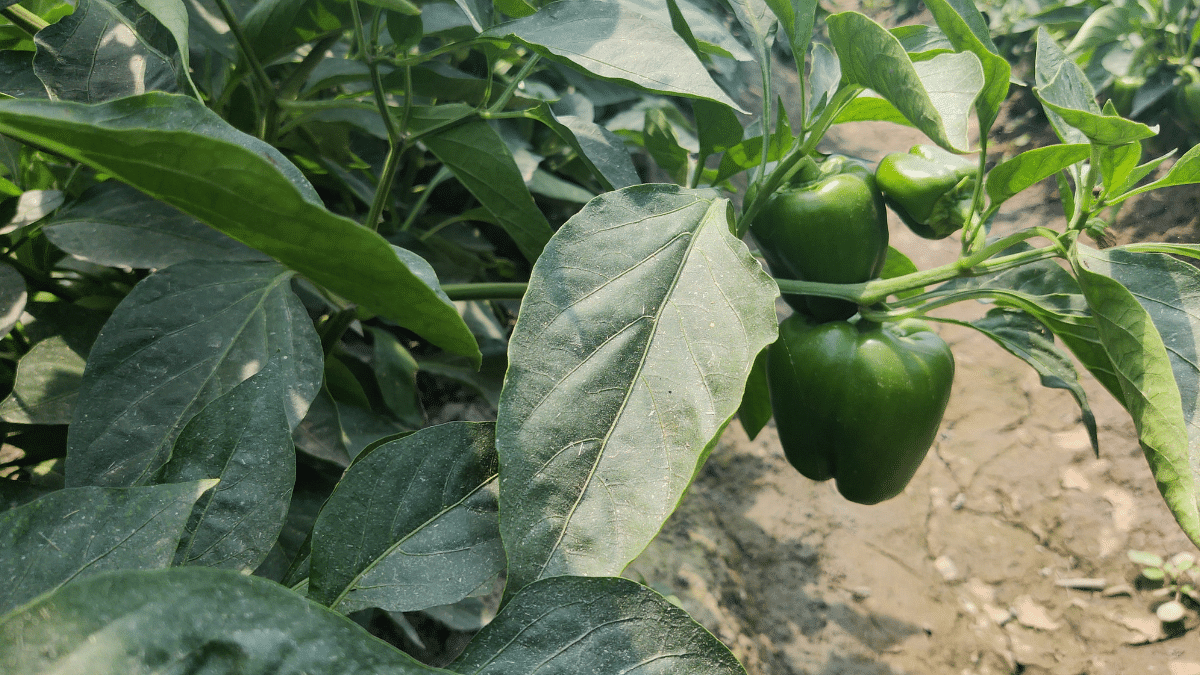
The efforts of the government have worked too.
According to the Mansa horticulture department, the land under capsicum cultivation in the district has doubled to 440 hectares this year from 220 hectares last year. The relatively cool temperature this year, too, has pushed the yield to 452 quintal this year from 450 quintal seen last year.
“Along with the capsicum coming in from other states, from this region (Mansa) alone, capsicum was overproduced. And this led to excessive supply, which naturally brought the prices to a record low,” explained Kumar.
While the Punjab government encourages farmers to grow vegetables, the sale of these perishable goods is purely dependent on private players.
“We have been demanding a cold storage facility from the government for very long. If we can store our produce when there is an excessive supply and release it when there is a shortage in the mandis, it will fetch us a good price. We will also not have to depend on the market traders, who decide the rates,” said Harwinder.
Currently, there is no system for the farmers to store these perishable products. They have to sell it as soon as they ripen.
Low production expected next year
While the price for buying the capsicum has fallen drastically, the farmers question the reason for the retail prices not dropping as a result.
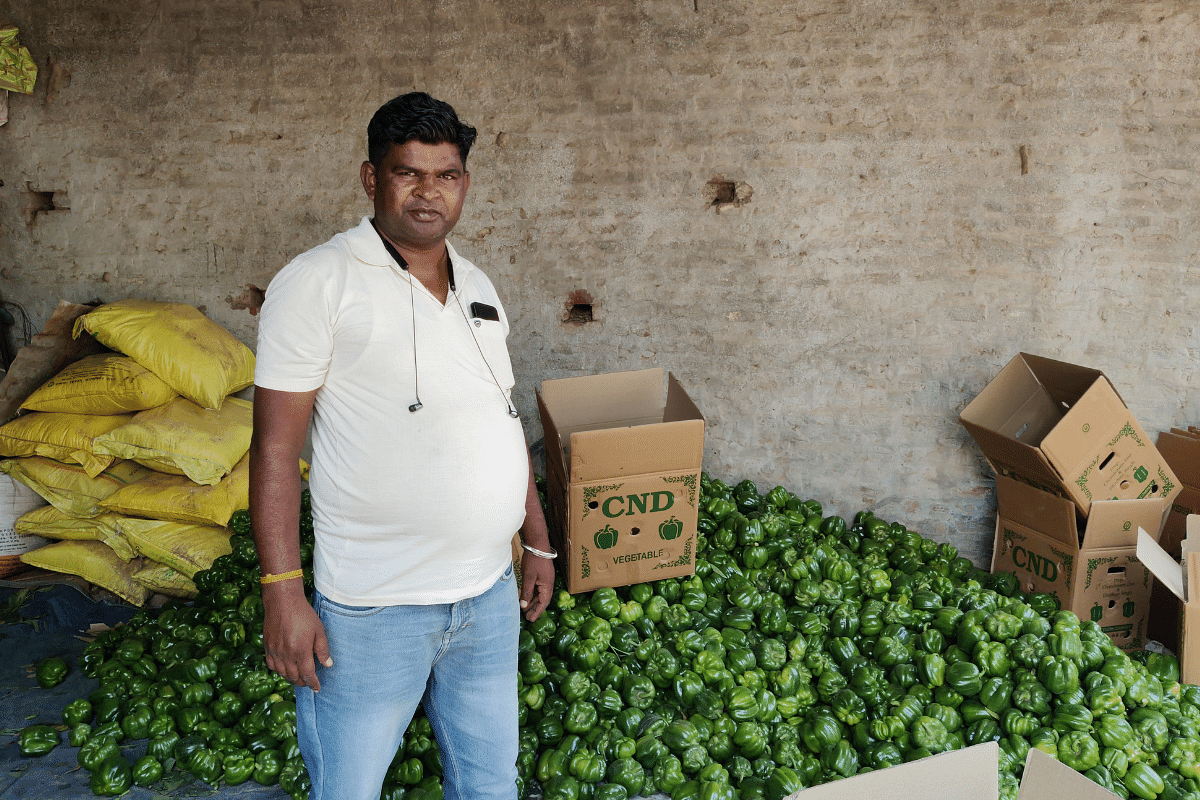
“If the traders are buying it from us at Rs 2, then why is it being sold for Rs 25 to the customers?” asked Gora Singh. “Where is the margin going?”
With a price shock this year, Kumar claimed that the government expects that the number of farmers growing capsicum will drop next year.
“Those farmers who have been growing it for over a decade will be able to absorb this price drop. They will continue to grow capsicum in the future as well. But for the new ones, this year is a big loss. They may move back to growing wheat and paddy. We expect the land under capsicum cultivation to drop to 350 hectares next year,” Kumar added.
(Edited by Richa Mishra)
Also Read: Why the farmers’ movement is no longer what the Modi govt thinks it is


